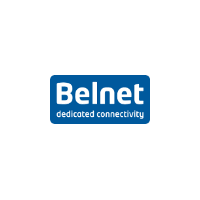Description
As an Asset Management Consultant, you’ll work within the IT Service Management department. You’ll help Belnet to design the future asset management solution in a structured approach to asset categorization, inventory responsibility, and data requirements.
1 What is the job content?
1.1 Asset Categorization & Inventory Responsibility
- Engage with all necessary teams to get an overall view of the asset landscape.
- Identify and define all asset categories relevant to the organization.
- Define responsible to each asset category
- Align responsibilities with the organization’s Roles & Responsibilities framework
- Compile a complete list of assets under each asset category
- Ensure accuracy and completeness of asset data
1.2 Information Requirements & Inventory Execution
- Determine essential information fields for each asset type (i.e.: Location, Status, Lifecycle, …)
- Engage with stakeholders to understand their information needs
- Conduct a thorough inventory to identify where and how assets are managed
- Propose methods for making asset data accessible (i.e.: Dashboard, automated reporting…)
1.3 Security and Risk Assessment
- Ensure compliance with internal security policies and external regulations
1.4 Centralization strategy
- Evaluate the feasibility and benefits of centralized vs. decentralized asset management.
- Recommend the optimal approach based on organizational structure and needs
1.5 Process Design
- Design asset lifecycle management processes from acquisition to disposition
- Design workflows for asset discovery, registration, tracking, and monitoring
- Define update frequency, inventory location, and roles involved.
- Ensure sustainability and scalability of the asset management framework.
- Design technical requirements and specifications for asset management systems and databases
2 What do we expect from you?
- Proven experience in asset management, inventory control, or related consulting roles.
- Strong analytical and organizational skills.
- Familiarity with asset management policies and digital inventory systems.
- Excellent communication and stakeholder engagement abilities.
- Ability to work independently and deliver structured outcomes.
- Security by design approach to ensure a complete security wise analysis on assets categories
3 Deliverables
- Asset category framework
- A complete and validated list of asset categories
- Documentation of criteria used to define asset categories
- Inventory responsibility matrix
- A matrix assigning responsibility for each asset category to specific roles/departments
- RACI chart for asset ownership
- Comprehensive asset list
- Asset information schema
- A detailed specification of required data fields per asset category (e.g : Serial number, location, owner,…)
- Inventory report and accessibility plan
- A documented analysis of stakeholder requirements for asset information
- Centralization recommendation
- A recommendation report on centralized vs decentralized asset management with pros/cons and impact analysis
- Final decision documented and approved by relevant stakeholders
- Process and procedure documentation
- Defined and documented processes for:
- Asset data update (frequency, triggers, …)
- Inventory audits (method, frequency, …)
- Data access and reporting
- Clear Roles & Responsibilities for each process step
- Defined and documented processes for:
- Implementation roadmap
- A timeline and action plan for implementing the asset management framework
- Milestones, responsible parties and success criteria.



